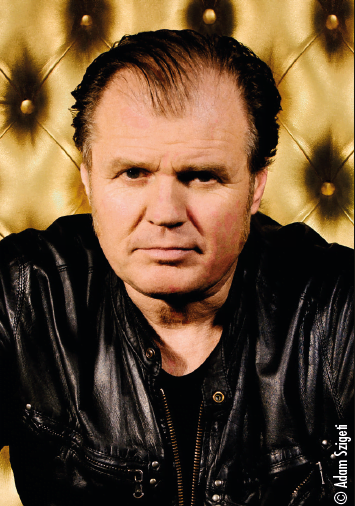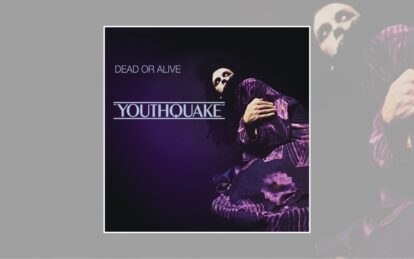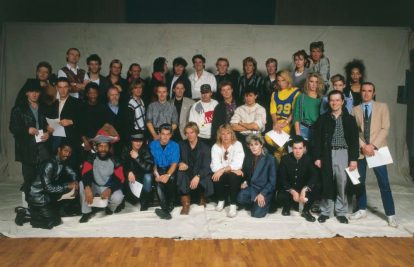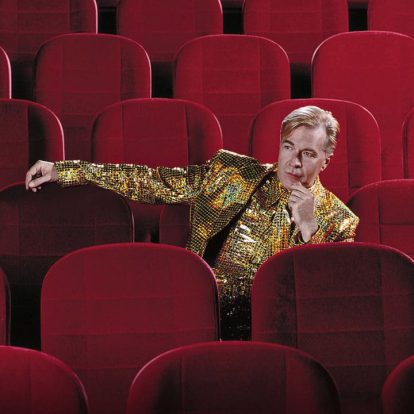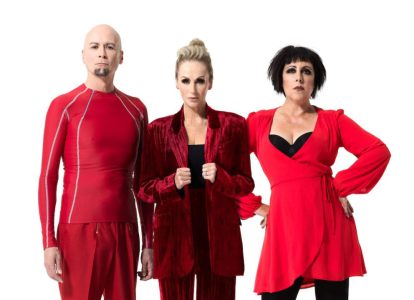Douglas McPherson interviews Rusty Egan, one of the 80s New Romantic pioneers, about working with Midge Ure, being part of Visage and founding Blitz nightclub…
Rusty Egan was one of the architects of the New Romantic scene at the dawn of the 80s. He began his career as a drummer alongside Midge Ure and former Sex Pistol Glen Matlock in Rich Kids. Their self-titled debut single cracked the Top 30, but Egan and Ure went on to far greater success with Steve Strange in Visage where their big hit Fade To Grey helped to define the sound of synth-pop. Egan, meanwhile, found his true forte as the co-founder and DJ of Blitz, the London club where the sound and look of the New Romantics was born.
How did you meet Glen Matlock and the rest of the Rich Kids?
I was a 17- or 18-year-old drummer and every week I bought the NME and Melody Maker. I answered adverts and auditioned for bands. One of them liked me and they kept asking me back, but they never actually said I was in the band. That was The Clash and it turned out they only wanted me as a drummer while they rehearsed and auditioned other drummers. One night, they invited me to a club after rehearsal. So I went with them and got to meet Glen Matlock from the Sex Pistols, Billy Idol and Siouxsie Sioux. They said they were doing a gig the next day and suggested that I went along to watch. That night I met The Damned and the Buzzcocks and before I knew it I was the available drummer on the scene. That’s when I got a call from Glen, saying he’d been kicked out of the Pistols and was going to start a band.
How did you get into DJing?
I used to go to the Speakeasy. The DJ would get so wasted that the owner used to give me free food and drink if I put the music on. In the meantime, Steve Strange had convinced me that he could stay in my flat rent free. Steve was a night person. He went out every night and slept all day. There was no way he was going to get a job. So, to pay the rent, I suggested that I took my record collection and play it in a little bar that was empty and invite all our mates – friends who were all in bands or in fashion. I was the DJ and he worked the door.
How would you describe the Blitz club to people who weren’t there?
It was magic, like punk in 1976. In those days, people didn’t have any money, but they could customise their clothes. They could put pictures of Karl Marx on an old suit that they’d bought. You could make your own magazines, like Sniffin’ Glue. You could be a band or a manager. We carried that on, so all the kids at St Martin’s College could go to Blitz and for one night they could be a hero. That was our song: Heroes by David Bowie.
What was the music like?
I played loads of Iggy Pop, The Stooges, Ramones, so we had our punky, trashy music, and then we had Gary Numan, who no one had ever heard of and Warm Leatherette by The Normal. We played Hi-NRG, electronic and up-tempo disco. I played movie soundtracks and David Bowie, which was the one pre-punk thing that everybody savoured. Then I’d drop in some glam rock like The Ballroom Blitz by The Sweet. It was a fun, party mix-up of all your favourite records. I would also play demos of Visage’s The Dancer and then ask people what they thought of it.
So Visage grew out of the scene at Blitz?
I was trying to make music to play in my club and wanted to make music influenced by Kraftwerk and the Yellow Magic Orchestra. These days, people are interested in music from anywhere in the world, but in those days it had to come from England or the States. Music from Sweden, Germany and Japan was considered laughable. We changed all that. We loved Europe, hence the track Visa-Age. It’s why Fade To Grey had the girl singing in French. I wanted our album to be non-stop with one track leading into the next. It signifies the set I was playing at Blitz.
You’re still a busy DJ today. Are you still making records as well?
I’ve got an album out called Welcome To The Dancefloor that includes a song called Glorious – my first collaboration with Midge Ure since our Visage days. Tony Hadley also appears on a song called Lonely Highway. We’ve also remixed the record for an additional disc we’ve called Welcome To The Remix and I’m doing a 65-minute non-stop beach version called Welcome To The Beach.
Rusty Egan’s Welcome To The Dancefloor is out now.
Read more: The Godfathers Of Pop: Bruce Watson interview
Classic Pop may earn commission from the links on this page, but we only feature products we think you will enjoy.

